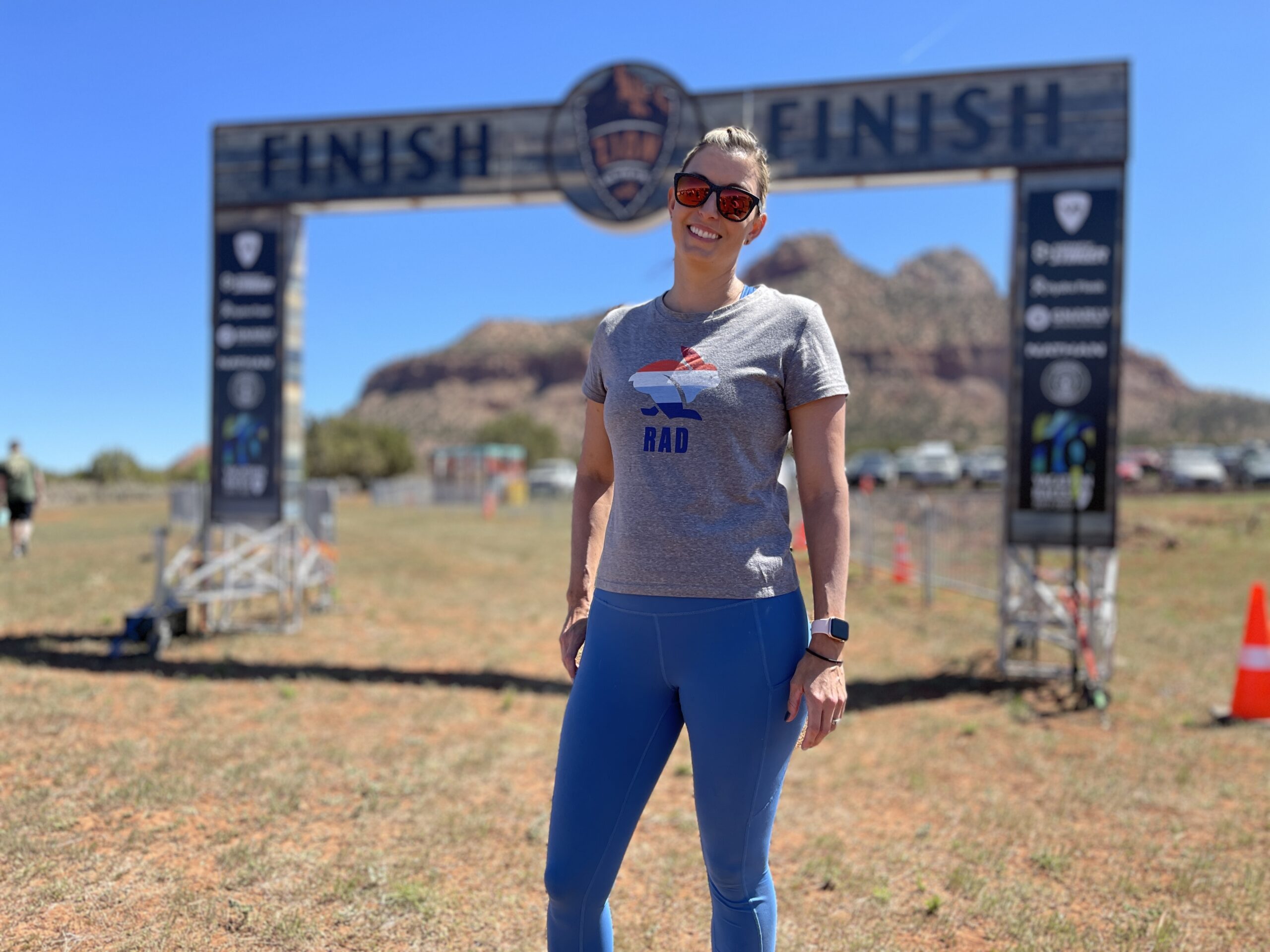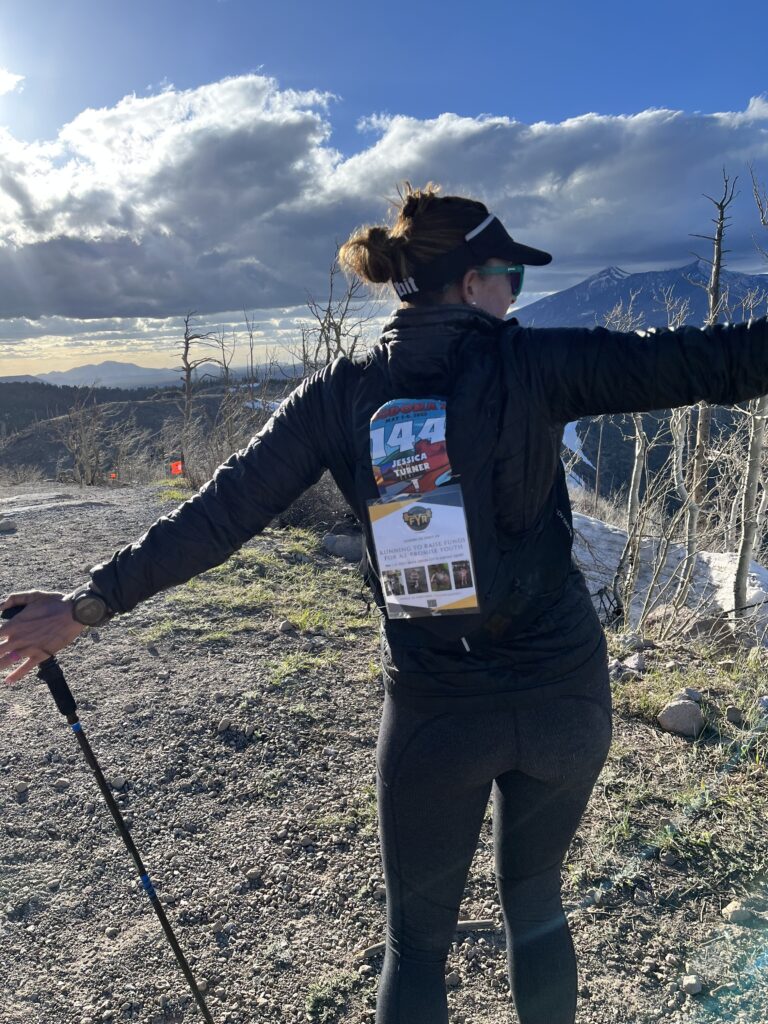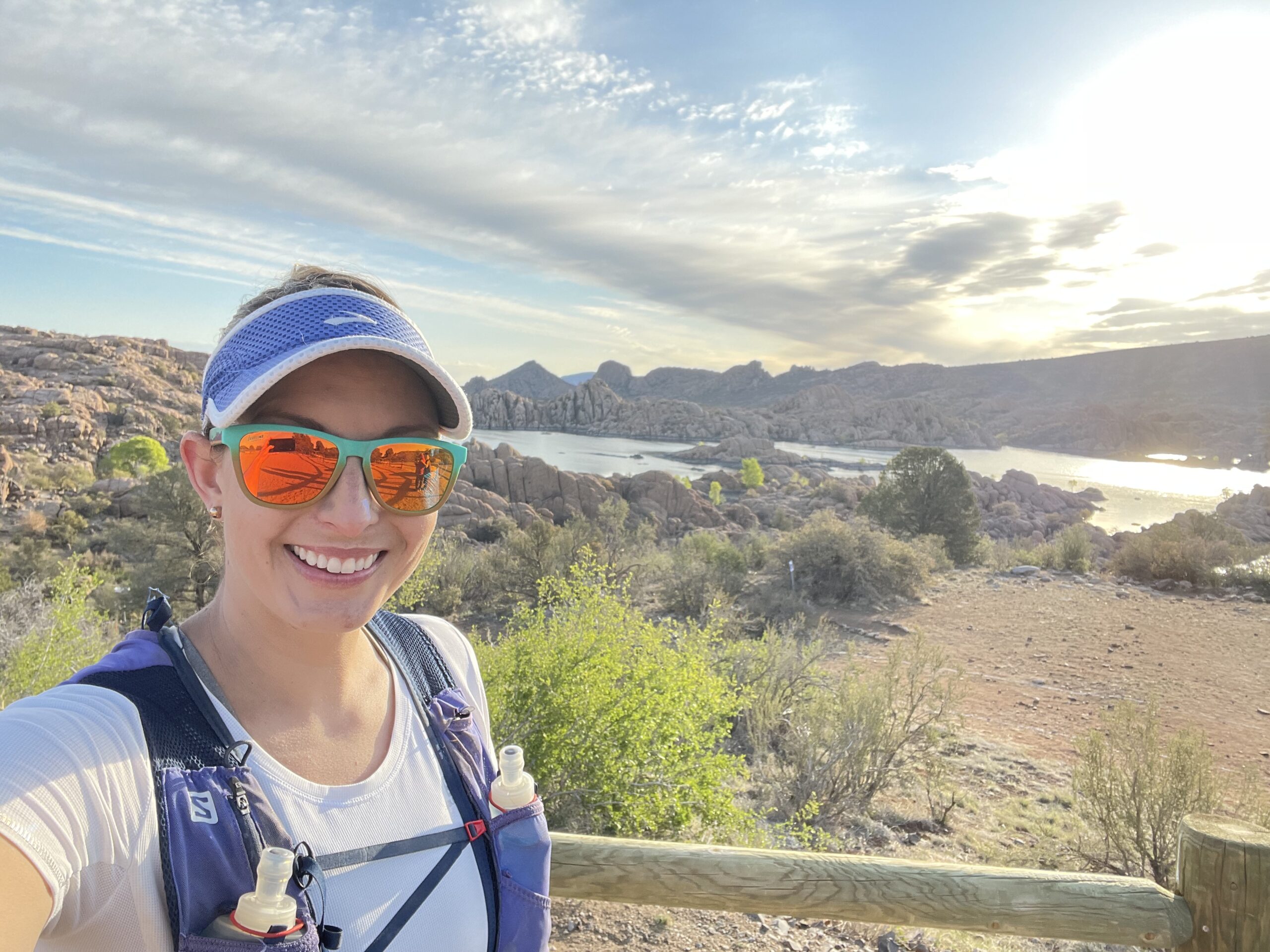Enduring 250 Miles Starts With a Single Step

Enduring 250 Miles Starts With a Single Step
Born in Mesa, AZ, Jessica Turner is a Friend of Kahtoola and a trail runner who has called Flagstaff home for two decades. She lives with her husband and two dogs (both of whom join her on her many runs) and works at her alma mater, Northern Arizona University, where her love of running began. In her own words, Jessica shares her journey from inactivity to finishing the grueling Cocodona 250 race.
I often think back to when I first started running. I was not in shape and, having been in college and concentrating on my studies, hadn’t thought about exercise at all. I kept my head in the books during the week and let loose on the weekends, which was catching up with me physically. One day, I decided something needed to change.
First Steps
I discovered there was a summer trail running series in my college town of Flagstaff. It was a series of six races where the distances ranged from 5K to a half-marathon. That was the kind of commitment I needed to get myself motivated to train.
At first, training meant going down to the university track with my now husband, Dylan, to slog a couple of miles. It was tough, and getting through those two miles was a struggle, but eventually, I progressed to where I was able to run a whole lap without stopping! I couldn’t believe I was capable of running further than I thought I could, so I started to push myself to test how far I could go. I even decided to contact the series Race Director and change my entries from 5K to 10K—now the pressure was on. I needed to take this all seriously so I wouldn’t embarrass myself out there.
“Who runs 6.2 miles at a time?” I thought to myself. “Those people have to be some Olympic-level runners to be able to run a full 10K.” As I walked down to the track to attempt my first 10K training run, I knew I was about to embark on something really hard. Again, my mind started racing, “What am I doing? This is going to be so uncomfortable.” And yet, I took that first step to begin my journey.
Over an hour later, I finished running the entire 6 miles without stopping. I was elated. I did something hard. I did something I couldn’t fathom doing only a few short months ago. It was ugly, it was a slog, but I did it. I remember calling my best friend afterward and explaining just how hard it was and how accomplished I felt. I just endured my first long run.
A Steep Learning Curve
A few weeks later, the summer running series rolled around, and it was time to test myself in an actual race setting. I was nervous, and the pre-race nerves, which I had never felt until this moment, were amplified by all of the unknowns.
The horn sounded and off we all went, embarking on this journey together. I couldn’t keep my momentum running uphill, so I reverted to a walk. Then an older gentleman passed me. He may have been about 70, and I thought, “I’m being beaten by a retiree?”
“…chasing the feeling of enduring something really hard would also lead me to take on one of the most difficult trail races in North America.”
I struggled through every last step, and after completing my first trail 10K, I was wiped. I struggled to get out of the car when we got home, and my pride was in tatters. I lost to an old man out there! But I finished without having to be air-evacuated, which I thought was a real possibility at one point.
Did I learn a lot? Absolutely. And I did it without giving up. I endured, which was a huge win in my book. It was a feeling I wanted to experience again and again: to confront and accomplish hard things. That summer, I finished six races: one 5K, four 10Ks and an intensely long 15K, most of which exposed me to trails in Flagstaff I didn’t even know existed. I was so proud of this accomplishment.
Little did I know at the time I would go on to enjoy running half-marathons, marathons and ultramarathons. And that eventually, chasing the feeling of enduring something really hard would also lead me to take on one of the most difficult trail races in North America.
The Ultimate Test
In May 2023, I set off to run Cocodona 250, a 250-mile foot race from Black Canyon City to downtown Flagstaff, Arizona. There’s a really interesting aspect to running for more than a couple of days in a row: you get a real sense of who you are at a raw, core level. By about the third day of running, everything is stripped down to what is underneath. When you are sleep deprived, in a calorie deficit, dehydrated, and your body has been brutalized by the relentless terrain, you gain real insight into your character.
MILE 78: DIGGING DEEP
Getting into Whiskey Row, at mile 78, I was feeling pretty beaten. The course had chewed me up and spit me out. I was already 30 hours into the race, which was not the pace I expected or had wanted. The first 34 miles have over 10,000 feet of elevation gain, which really slows you down. After that, I thought I would be able to move faster, but I couldn’t, and that messed with me mentally.
I was so incredibly happy to have made it to mile 78 because it was the first time I saw my crew since mile 37 at Crown King. At the same time, the brutality of the course left me feeling defeated, so I decided this was the time for a nap to rest and recharge.
After about an hour of sleep, I got up, ate and gathered myself. I felt like a new person. Like I could continue enduring the brutality of the race. This course wasn’t going to take it easy on me though, and I was going to have to dig deep to continue.
Despite my nap, by the end of day three, I was fighting deep sleep deprivation for the first time and having trouble staying in control. I was left with a body that was moving me physically forward, but a brain that was detaching itself from the situation. I kept telling my pacers, “I feel like I’m out of my head.” My voice sounded like it was coming from someone else, and I couldn’t think for myself. I was reliant on my pacers to make sure I was eating and drinking and to let me know where I was and how far I had left to go.
Without them, I probably would have wandered off into the forest looking for a rock to rest my head on. Having someone to talk to helped take my focus off of the discomfort, and each of my pacers was patient and understanding whenever I hit a new low. They also knew there was only one way out of this: finishing the race. And they weren’t about to let me fall short.
MILE 162: I KNEW I WAS GOING TO CONTINUE THIS JOURNEY
Arriving in Sedona, at around mile 162, I had a real breakdown. The nerve damage to my feet was intensifying, and sleep deprivation was dragging me down. Again, it was a pacer that got me there, even though I wanted to keel over on the side of the trail and wait for someone, or something, to come get me.
By this point, I was starting to question everything. But when I arrived at the aid station, my friend Emily was waiting to surprise me. It was just before 4:00 a.m., and she was there to scoop me up and take a load off of me mentally. I was so elated to see her that I knew, somehow, I was going to continue this journey.
load off of me mentally. I was so elated to see her that I knew, somehow, I was going to continue this journey.
By mile 214, the Fort Tuthill aid station, I had time to get some real sleep, having made up a lot of time on the preceding section. When it was time to get going again, my husband, Dylan, woke me up, and I tried to gather my wits. But, once again, things seemed to be falling apart. I didn’t have an appetite, and every time I drank, I felt indigestion immediately. My body was swelling, and everything was seizing up. The wheels were coming off.
I sat in a chair by myself and started to weep. I knew I wasn’t close to being done. With 36 more grueling miles left, I didn’t know how I was going to get my body functioning again. I also knew I wasn’t going to stop now. I tried to choke down some food, put on some sunscreen and get ready for the heat of the day. Then I was asked some basic questions from the medical staff to make sure I was coherent enough to continue. I was asking my body to continue when all systems were shutting down, but I knew I had to push through and endure the next 12 hours to get to the finish line.
MILE 240: UP I GO!
Starting around mile 240, the course has a brutal climb going up Mount Elden. I had run this section quite a few times in training, and I knew what to expect. Except I didn’t. Leveraging my out-of-head state, my pacer got me pushing harder than I thought was even possible. My skeleton of a body didn’t have a mind behind it and was just robotically going through the motions. I went into a bit of a possessed state and started powering up the climb. My pacer didn’t give me the option to stop. It was just, “Up you go!”
If I stopped, I would have fallen apart. But in the end, I crushed the climb and laid down my second-fastest time ever through that section. I was so elated with how it went, I began smiling, soaking in the suffering I endured and being thankful for every last bit of it.
Appreciation & Accomplishment
 What I found after suffering for days on end was that, at my core, I was extremely appreciative. Beyond the appreciation for those who helped me complete this task (crew, pacers, volunteers, etc.), I appreciated my body for being able to endure and accomplish an extremely hard task. Enduring through the heat, the cold, the nerve-damaged feet, and the sleep deprivation, I was always able to take that next step. Nothing about Cocodona was easy, and I was able to endure it all.
What I found after suffering for days on end was that, at my core, I was extremely appreciative. Beyond the appreciation for those who helped me complete this task (crew, pacers, volunteers, etc.), I appreciated my body for being able to endure and accomplish an extremely hard task. Enduring through the heat, the cold, the nerve-damaged feet, and the sleep deprivation, I was always able to take that next step. Nothing about Cocodona was easy, and I was able to endure it all.
So my advice? Take that first step and see what lies ahead.
That’s what I did all those years ago on the track, and now I proudly hold my head high. Enduring has allowed me to explore new trails and towns, take in amazing sunrises and sunsets, make new friends, see stunning scenery, find thankfulness in the grind and build confidence.
I now know I can do hard things. And you can too. You just have to take that first step, work toward your goals and endure.


